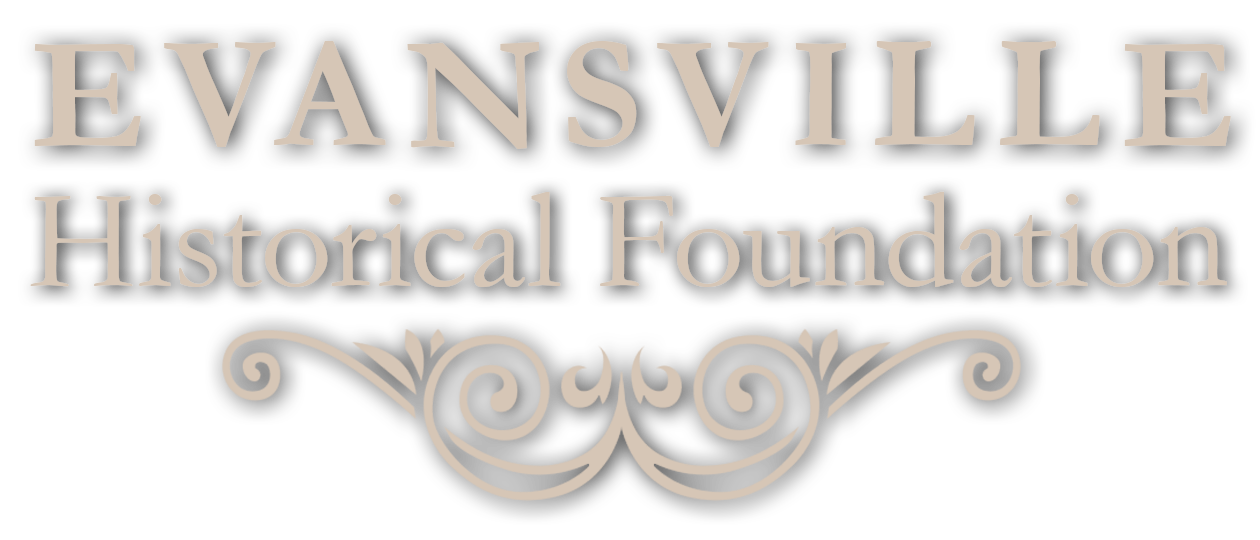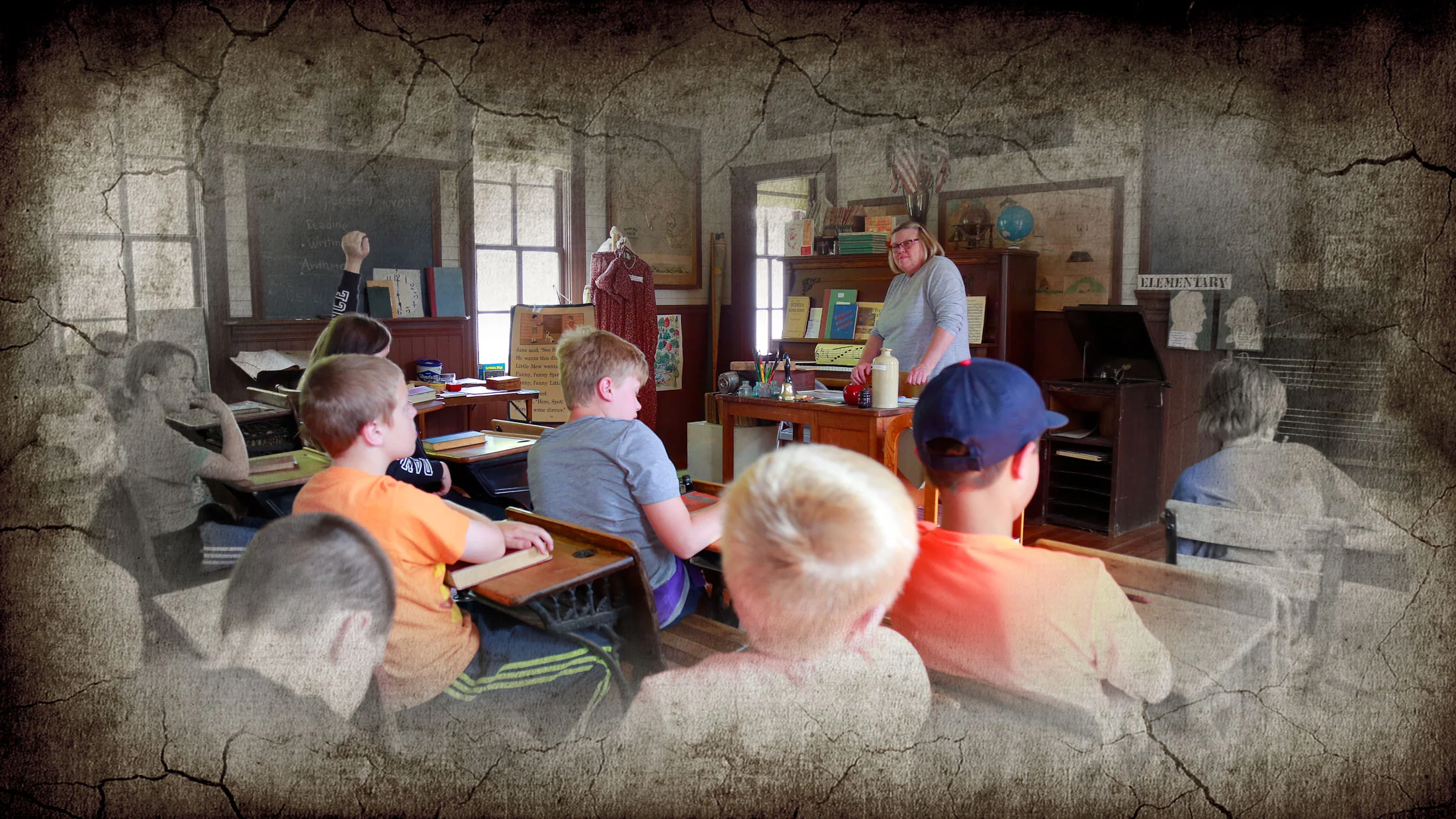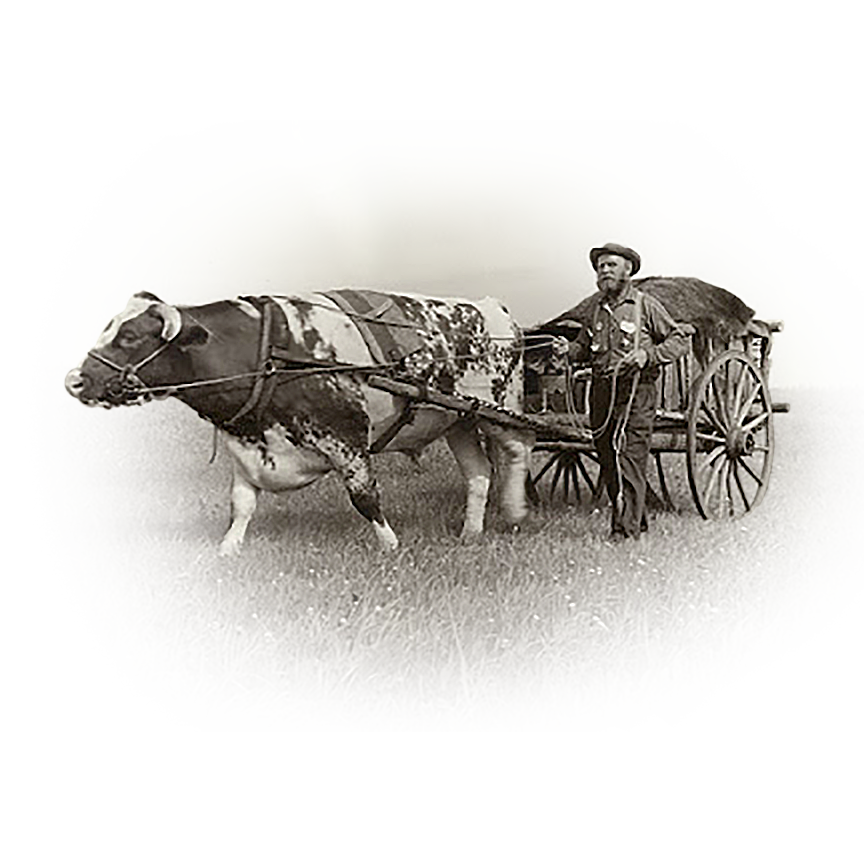History of Evansville
Little is known about the history of this area before the first white settlers arrived, but we know that for many centuries groups of aboriginal peoples wandered nearby, and perhaps even camped here for a time. Many artifacts have been unearthed around rural Douglas County, like this hand-carved pipestone pipe were discovered by a pioneer “sodbuster” just north of Evansville.
Here are just a few milestones from Evansville’s history…
There were many rutted ox cart trails between Fort Snelling and the Red River Valley. One of them passed through this area. The Métis would exchange trade goods from the fort with fur from the trading posts in the Red River Valley and beyond.
Evan Evanson (for whom the town was later named) was a pony express rider with a route between St. Cloud and Fort Abercrombie. The shanty he built here became a stagecoach stop when J. C. Burbank & Co. of St. Paul began running a stage line through the area in 1859. Stagecoaches transported people, mail, and cargo, and played a crucial role in shaping the commercial and social life of Minnesota in the days before the railroad.
Immigrants from Norway formed the Norwegian Evangelical Lutheran Church in 1869. It later became known as Our Savior’s Lutheran Church. On January 3, 1972 a furnace explosion destroyed the building.
The Railroad comes to Evansville. The St. Paul & Pacific Railroad built a line through Evansville that went to Fargo. By 1890 the name of the railroad line was changed to the Great Northern Railroad. Another line that ran from Evansville was the Tintah spur line which went to Grant County and beyond. That branch line was abandoned in 1942.
The first edition of the Evansville Enterprise newspaper was published on October 5, 1882 by Mr. H. G. Urie. The paper continued under various editors until 1946 when it was purchased by the Park Region Echo of Alexandria.
Swedish immigrants formed the Swedish Evangelical Emmanuel Lutheran Church. It later became known as Immanuel Lutheran Church. On January 4, 1972, in the spirit of Christian love, the Church Council presented a proposal to the Church Council of Our Savior’s Lutheran Church offering to make its facilities available to their members and that they combine services and ministries as much as possible and that all expenses be shared equally.
Alf Thompson was born to Wilhelm and Pernella Thompson in the house that now serves as the main office for EHF and Mound Grove Cemetery Association and houses the research library. Alf grew up to become an independent oil producer and philanthropist and was the founder of the Evansville Historical Foundation.
The first Town Hall was built in 1897 at a cost of $4,000 and was located on Railroad Street. It housed the Evansville Fire Department trucks, public library rooms and the village council rooms.
Stonemasons lay the foundation for Carlson’s Restaurant, built by August Carlson. Through the years the building has also served as a drug store and a coffee shop and is now owned by the Evansville Arts Coalition and is known as the Evansville Art Center.
The Swedish Mission Church tore down their building, built in 1897 in Lund Township, and moved it to the village of Evansville to provide a more central location. Today it still stands on the corner of Alexandria and Meeker Streets as Calvary Covenant Church.
The Evansville Co-operative Creamery was established by a group of farmers. They purchased a building from Harvey Norby located near the site where Hiway Amoco stands today on County Road 82. In 1925 the Co-op members gathered for their annual picnic with the Ashby Cadet Band providing entertainment.
The Midland Cooperative Oil station began in 1934 and was operated by Mr. Rudolph Lang. It continues today as Evansville Automotive owned by Brad and Tammy Otto.
World War II. The bombing of Pearl Harbor by the Japanese on December 7, 1941 affected the population of Evansville along with the rest of the country as the community sent many of their young men off to war.
Schwantz Fairway Foods purchased by Louis Schwantz in approximately 1912 was later owned by his son, LeRoy, and daughter, Effie. They sold it to Wilbur and Florence Nelson, who took ownership on January 1, 1955 and it became Nelson’s Store.
During the late 1960’s and through the 1970’s, snowmobiles took over Evansville in a big way. So much so that Evansville claimed the unofficial title “Snowmobile Capital”. There were three snowmobile dealerships in town during that period. The February 28, 1971 edition of the Minneapolis Tribune wrote a column about Evansville that stated, “About half of the people in town own a snowmobile. That may not be the highest ownership ratio in the state, but it’s up there.”
On September 7, 1975, the Immanuel Lutheran Church congregation gathered at their building for the last time. Pastor Moll and church officers led a procession to the newly constructed Faith Lutheran Church at 526 State Street. They held their dedication service on December 7, 1975.
The Pioneer Heritage Conservation Trust was created in 1985 by a group of hunter/sportsmen from the Evansville area with the thought of preserving the marsh near Evansville that belong to Alf Thompson. With help from Mr. Thompson, the vision grew to also promote long-term stewardship of the land and it’s resources. The Trust was initially funded with contributions from the Thompson family.
The Evansville Historical Foundation was founded by Alf R. Thompson, located on the original Thompson homestead at 304 Gran Street in Evansville. He had an interest in preserving historic roots in the Evansville area and a vision to create a village of the kind founded by early settlers of the area.
The Central Lakes Trail was dedicated. The state of Minnesota’s 23rd Trail is built on the Burlington Northern railroad corridor that was abandoned in 1991 and stretches between Fergus Falls and Osakis. The trail is open to non-motorized traffic with the exception of snowmobiles during the winter season and is a great way to see the beauty of the countryside.





















